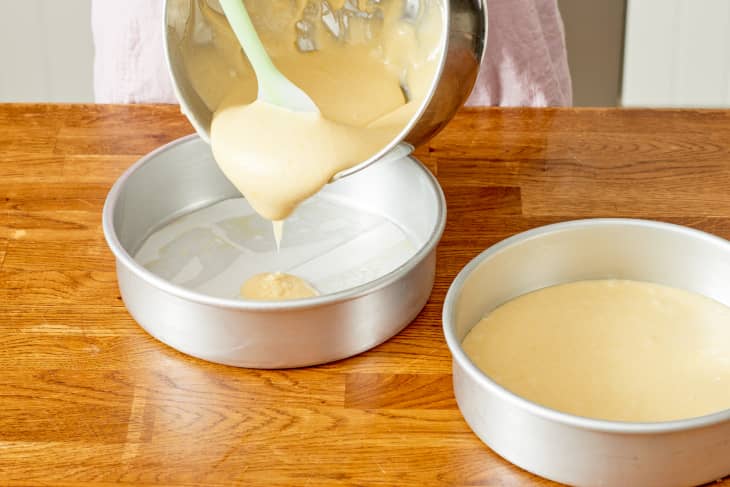Why Vanilla Is So Expensive — And Always Worth It
I remember when the word basic wasn’t used as an insult. If you wanted to explain that something (or someone!) was overly bland, commonplace, or simple, you’d call it (or them!) vanilla. I get the sentiment, but it always seemed pretty mean to the humble vanilla bean. And with its latest skyrocketing surge in price, I recently decided to give vanilla the thought and attention it deserves.
First, Why Is Vanilla So Expensive Now?
Cyclone Enawo struck the island of Madagascar, the world’s largest producer of vanilla beans, in March 2017. Prices fluctuate on natural agricultural products all the time, but this shot prices up to more than 300 times that of about a year before. The jump was extraordinary and staggering. I watched bottles of vanilla bean paste get more costly every day online and in brick-and-mortar stores. There have been other weather issues in Madagascar before and some price shifts, but I had never seen anything like this.
The secondary issues affecting the pricing of vanilla are simply the increase in demand and the overall complex, agricultural socioeconomics of vanilla. Vanilla isn’t subject to particularly efficient farming techniques (it’s all still hand-labored, each orchid hand-pollinated, just as it was when Cortez found it in Mexico where it had been a food for the highest echelon of Aztecs). As more and more consumers want all-natural flavors, farmers struggle to keep up with the demand. And that’s even without dealing with the damage left in the wake of natural disasters.
No matter what the reason, the effect has been clear: Prices have skyrocketed and the quality of vanilla has suffered. For me that means digging deeper to shell out for the best stuff from companies I trust.
The Decline in Vanilla Quality
Vanilla pods grow on trees and need at least nine month from pollination to harvest. The highest-grade beans from Madagascar are deep black, with sinewy, moist skin that has been slowly and meticulously sun-dried. They are slow-cured, conditioned, prized uniquely flavored vanilla beans. Storms in Madagascar mean that the crop can be decimated and new planting won’t bear fruit for up to three years. It also means that when the prices spike, many farmers hastily pick and process, shorting the steps and sending green unripe beans to market.
Vanilla is so desirable that there have even been reports from Mexico that nefarious small producers are marketing natural knock-offs to tourists. The quality declines, even as the prices rise. Buyer beware when it comes natural products —especially in this moment of shortages and high demand.
Is Good Vanilla Worth the Money?
The taste of real vanilla is so cemented in our collective eating psyche that a world without vanilla beans is unimaginable. Vanilla is also an important component of other flavors, such as chocolate, strawberry, caramel, and coconut. It rounds out taste by adding a delicate creaminess, balancing any excess sweetness, toning down bitterness and acidity even when used as a small component in a recipe. And the scent? When those freshly scraped teeny seeds hit warm cream and the volatile oils are released, the perfume alone is intoxicating and memorable.
Vanilla prices and quality became my number-one topic of discussion with bakery owners, pastry chefs, pastry teachers, and home cooks. Everyone agreed that the surge was a calamity and it was unprecedented. The more I asked, the more I was told that dishes featuring vanilla as the lead flavor — crème brûlée, for example — were being removed from dessert menus. Ice cream flavors were getting tweaked and even the most beloved recipes were being looked at for redesign.
That led me to realize how wrong the notion of vanilla as “basic” really was. Real vanilla is a kitchen essential and it is an essential in my kitchen. Real vanilla bean paste, real vanilla powder, and real vanilla extract sits firmly and proudly in my cabinet and in my refrigerator. I won’t compromise on using real vanilla. I acknowledge, here and now, that real vanilla is my biggest luxury indulgence.
A little bit of real vanilla supports, improves, and often defines everything it touches — especially when it comes to baking. I’ve stopped using the costliest paprikas and scaled back on fancy salts. When it comes to vanilla, however, I firmly believe it’s worth the price. Today, I realized that vanilla beans are the diamond studs in my culinary wardrobe. And without real vanilla, my dishes are, in fact, basic.
Shopping for Good Vanilla
In addition to knock-off vanilla, the flavor industry has been creating synthetic vanilla for decades. Globally, about 90 percent of the vanilla flavoring used by the world’s candy, cake, and ice cream makers is synthetic. Most artificial vanilla, or vanillin, is made from petrochemicals, distilled from GMO vanilla beans, and many are synthesized from pine bark, clove oil, rice bran, and lignin. Vanillin derived from some sources does not need to be labeled as artificial. Synthetic vanilla is widely available — and cheap, cheap, cheap.
These vanillas are just one flavor. All natural vanilla, however, is actually multiple flavors with layers of nuances. Natural vanilla flavor characteristics span no less than 29 distinct taste ranges with many more micro flavors, ranging from smoky, spicy, botanical, sulfury, sweet, creamy, medicinal, to floral. If I shop for real vanilla for just one reason, it’s that I prefer these layers of flavor. Some vanillin fans argue that it can be challenging to distinguish artificial vanilla and real vanilla in tiny quantities. But I find that one-note fake stuff to be, well, basic.
Our Favorite Vanilla Extract: Nielsen-Massey Madagascar Bourbon Vanilla Extract, $30 for 4 ounces at Williams-Sonoma
What kind of vanilla do you use? Are you willing to pay top-dollar for the best stuff?
